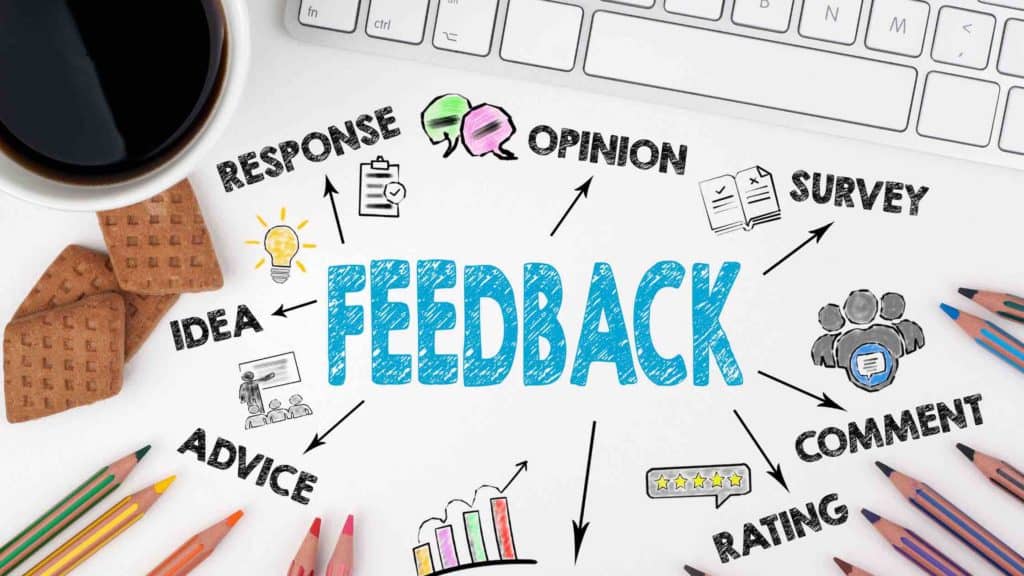Are you looking for ways to increase your visibility, build industry authority, and get more revenue? Well then, have you ever considered trying to write a book to get clients? It might just be the perfect answer for you.
In this post, we’ll discuss how to write a book to get clients, even if you’re not a professional writer and have never written anything before.
There are ways that you can quickly write a book for your business in under 30 days to help you grow your business and attract new clients while you sleep.
While you may think you need to write a 200+ page book with over 50,000 words, that is no longer the case!
Not only will it take 6-12+ months to write, but you will also likely only be able to sell it once you have a trustworthy brand and a following. You’ll also need to undergo substantial marketing efforts to launch it.
So what is the other option?
Instead, you can write a much shorter eBook that you can use as a lead magnet.
It is a simple guide that explains how to solve a particular problem that your ideal customers have.
In this guide, we’ll be focusing on the second type of eBook – the lead magnet.
Let’s get started!
Benefits of a Lead Magnet eBook
There are many benefits to creating a Lead Generation eBook. They include:
- It’s much faster and easier to write
- Perfection doesn’t matter. Only information does
- It is ok to make mistakes – you can continually update it over time
- It doesn’t need as much time or research
People download ebooks because they want help with a specific problem. If you can solve their problem, they will become more loyal to you and most likely buy something from you in the future.
Should You Sell An eBook Or Give It Away For Free?
You can test both options to see which works best for you.
But, for short eBooks, you’ll most likely have the best success if you provide it as a free downloadable in exchange for an opt-in to your mailing list.
Having more readers and generating less money from the eBook usually leads to more earnings in the long run than selling eBooks but reaching fewer people with your personal brand.
This is because you can sell your products or services much higher than an eBook, and it essentially provides free advertising to a larger audience.
Instead of selling it for $2.99 or $9.99, there are other ways you can monetize your book. These include affiliate links for all the products and services you sell and recommend.
How long should Your eBook be?
In general, most eBooks are anywhere between 2000 to 5000 words. If you write an eBook below 2000 words, readers may feel disappointed that they could have just read it as a blog post instead of having to sign up for it.
Anything above 5000 words is usually too long to keep readers focused – especially when they just want a quick and easy way to solve their problem.
But, there is no hard and fast rule regarding word count. Instead, you should focus on providing value to your readers, cover all the information they require, and be sure to solve their problems. Readers should feel like giving you their email address in exchange was worth it.

What are The Advantages When You Write A Book To Get Clients?
Writing a book is not only a great way to build your personal brand, but it also has many other benefits. Here are some of the benefits of writing books to get clients:
Increase Your Expertise:
Writing a book allows you to share your knowledge and expertise with others. It helps you become an authority in your field and leads to people coming to you for advice and guidance.
Build Relationships:
Writing a book gives people the opportunity to get to know you better by reading about who you are as an individual and what expertise you have in your field. This can help build relationships with potential clients or partners that would benefit your business growth.
Reach A Larger Audience:
Self-publishing a book makes it easier to reach a larger audience for free. You should also encourage your readers to share it on social media with anyone they know who may benefit from it.
10 Steps How To Write A Book To Get Clients And Thrive
Writing a successful ebook requires a lot of strategy and a certain layout to achieve the best results and increase conversions.
Here are 10 steps on how to write a book to get clients – even if you have no experience.

1. Should You Write An eBook?
Before you begin writing, you should determine whether you actually need to write a book. Or is the content better off just as blog posts instead, or perhaps in another medium – such as YouTube videos or a podcast?
A blog post generally covers a single, specific topic from start to finish. It satisfies the reader and ends their search for the answer.
A series of blog posts will each cover one smaller component of a larger topic and, when read sequentially, will cover all the information from start to finish.
While an eBook covers a more specific problem or pain point that people have. It teaches you how to get started through to completion and flows better in a particular order of what you need to do.
eBooks also often include actionable, step-by-step instructions and a checklist. They also contain a specific call to action.
Writing a series of blog posts and then later compiling them all into an eBook is also possible.
2. Select A Topic
After you’ve decided that you should write an eBook, you will need to decide on a topic.
What exactly should you write about?
For the best results, you should write about your customers’ pain points and how your product or service can help them.
Check out your competitors, and see what topics they are writing about. Is their content doing well? Do people share it and mention how it is helping them?
You can also visit places such as Quora, Reddit, or Facebook groups to see common questions that people in your target audience are asking.
‘How To’ eBooks usually achieve the best results.
3. Determine Your Goals

Next, you need to find out what you want to achieve for your business by writing an eBook. Generally, there are three different goals that eBooks can help you achieve.
They are:
Lead generation:
Perhaps more important than potential customers reading your eBook is them sharing their email addresses with you. This gives you a point of contact and lets you stay in touch with them while promoting your products and services.
Establish industry authority:
By producing long-form, evergreen content, you can position yourself as a leader in your industry and display how much knowledge and expertise you have. Readers of your eBook will then trust you and continue to interact with you and your content.
Promote a service:
After making a connection with your audience, you will be in their mind. After your readers know you, like you, trust you, and see your service advertisement, they will likely want to work with you or buy your products.
4. Create An Outline

Trying to start writing a book from scratch may seem like the quickest way to get it done. Still, without a plan, you will likely waste a significant amount of time, money, and energy. Either that or give up entirely.
You’ll need to first research the topic you want to write about and look at what works and doesn’t for competitors. Once you have, then you should start to structure your outline.
Break it down into chapters, and write some dot points for what you will cover in each chapter. You can also break it down into subheadings.
For the most effective outline and to stay on topic – write a summary of what the reader should learn from each chapter.
5. Begin Writing Your Book
Now that you’ve created your outline, it is time to start writing. Again, expanding on dot points is much easier than trying to write from scratch.
Right away, establish your expertise with your readers on the first page. You should tell them why they should trust you, what experience you have, and that you understand their needs and can solve their problems.
Cover some of the most common mistakes people make – including yourself.
By talking about your own mistakes, you’re more likely to connect with your audience. It will also show them that you were once in their shoes and that they can achieve your level of success too.
When you write the actual content, you should ensure that the information is well-researched, informative, engaging, and easy to understand. In addition, make sure that you write with your target audience in mind.
There should also be action steps for readers to take as they progress through the ebook.
Writing can often be tricky. Luckily, there are some tools you can use to help you write better and make your content more engaging:
- Jasper AI – an AI writing assistant to help you write better
- Grammarly – for editing/proofreading/grammar
You can also consider outsourcing your book.
6. Include Images
Nobody wants to read a giant wall of text anymore when it comes to non-fiction eBooks.
Instead, you should include images, graphics, and illustrations to add something extra to your book and help it stand out from the rest.
A great resource for finding royalty-free images is Pexels.

Images and visuals help readers understand or remember certain concepts. Therefore, they should be related to what you describe rather than randomly scattered throughout the text.
Your ebook should look visually stunning and be easy to read. Use larger fonts, and keep the clutter to a minimum.
Use different fonts to help statistics and quotes stand out, and also consider creating your own infographics.
7. Format Your eBook
So after you’ve written your eBook, next is time to format it in a visually appealing way. This can be the difference between people actually reading it or instantly closing it.
With millions of eBooks, this is how you can stand out from the crowd. But unfortunately, most creators don’t take this extra effort – and then wonder why they don’t achieve the desired results.
If you do this, you are already well ahead of most of your competition.
You can use Canva to create visually stunning eBooks.
Hundreds of templates are available, and you don’t need to be a graphic designer to create beautifully designed books. Instead, everything is done in a browser and using simple drag and drop.
After you’ve formatted your book, you’ll want to export it as a PDF, the most common format for free downloads.
If you want to try to sell your eBook on the Amazon Kindle store, you’ll need to format it as either a mobi or .azw file.
8. Create Some Hype To Promote Your eBook

So you’ve written and designed your eBook, and it is looking like a million dollars. What next?
You’ll need to start promoting it and building hype to let people know it exists!
You can create a pop-up signup form on your website with an offer for people to download the eBook in exchange for joining your mailing list.
You can also create a separate landing page for the eBook – which you can also rank on Google over time and bring in an entirely new audience.
Once you’ve set up your eBook, it’s now time to spread the word about your eBook launch via social media!
Another great tactic is to write blog posts or guest posts where you repurpose part of the content from your book. You can then add a call to action to sign up to receive the complete eBook.
Promoting it via a guest appearance on relevant podcasts is also a great way to build a bigger audience.
Also, consider adding a call to action at the end of your related blog posts to sign up to receive the eBook. Not only will this get you more readers, but it will also help you to build a mailing list.
9. Measure Your eBook’s success
To find out how successful your eBook is, you should track it. For example, you can set up monitoring for mailing list sign ups and also downloads of your eBook.
This will give you an idea of how many people are signing up and then downloading it. You can also track where they discovered the eBook – either from social media, a specific blog post, or a site pop-up.
Encourage your readers to also share your eBook with their network if they find value in it. This will help you get as much exposure in as short a time as possible.
10. Listen To Feedback

Perhaps your readers have a particular pain point that they still are struggling with. Or maybe you are constantly getting asked the same questions.
You can either update the eBook to add extra information or perhaps write a second eBook to address any additional questions people have about what to do next.
You can also use any common questions for ideas for individual blog posts that you may not have thought about otherwise.
It may be a good idea to give the first book away for free and then sell the next book.
Creating multiple eBooks helps you to further strengthen your industry authority and credibility. In addition, it allows you to develop other digital assets that can lead to more clients.
Final Thoughts – Write A Book To Get Clients
If you’ve been wondering how to write a book to get clients, then the best way to go is to write a free 2000-5000 word eBook that you give away in exchange for a signup to your email.
You can have an eBook written within weeks that can help you to increase industry authority and build trust.
It is the most important thing you can do to position yourself as a thought leader, which also helps you land more clients!
Before someone works with you, they must first know you, like you, and trust you – an eBook helps you achieve all three of these while also building your email list.
Use the above steps to write a book to get clients today!
FAQS – How To Write A Book To Get Clients
How much does it cost to have a book written for you?
It depends on the book’s length, the amount of time and research required, how many visual elements are included, and the writer’s experience. It also varies depending on whether you only need the book to be written or also to have it formatted. Generally, it can cost between a few hundred dollars up to $1000.
How writing a book can help your business?
When you write a book on a specific topic in your industry, it helps to increase your visibility, as well as positions you as an expert. This increases your authority and boosts your credibility, organically leading to more people wanting to do business with you.
How long should a business book be?
If you want to write a traditional business book, it should be between 50,000 to 60,000 words or approximately 200 pages. However, an eBook is much shorter, usually between 2,000 to 5,000 words, or about 12 to 15 pages.
Should I write a book or start a business?
Ideally, you should do both. Having a book is what helps you to increase your visibility, build trust with your readers, and also position you as an industry authority and expert where you can prove your expertise. Publishing a book is much more authoritative than just writing a blog post.


